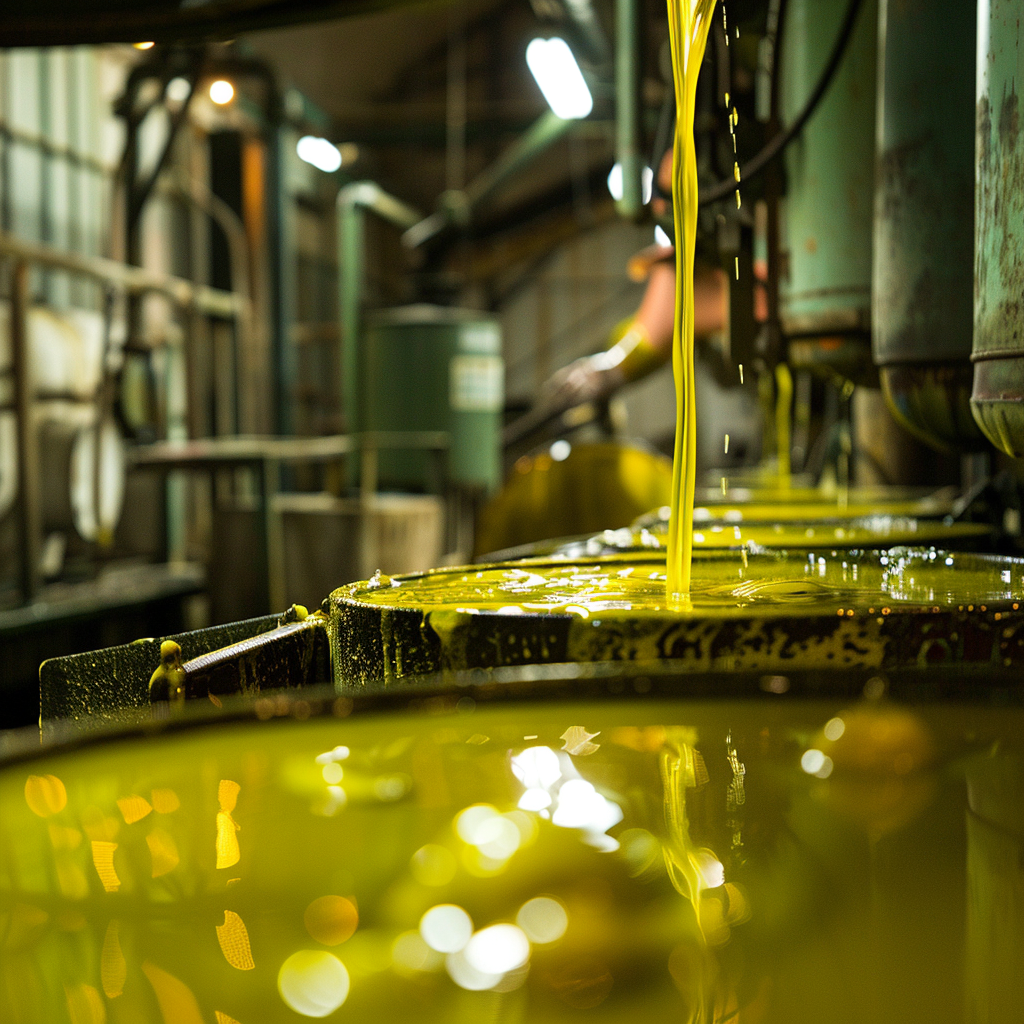In olive oil production, there are a number of traditional extraction methods that have long remained the industry’s mainstay. However, with the development of technology and growing interest in quality healthy food products, new approaches to extracting oil from olives have begun to emerge. Innovative methods such as cold pressing, ultrasonic extraction and supercritical processing represent promising trends in olive oil production.
Traditional Olive Oil Extraction Methods
Traditional olive oil extraction methods involve pressing the olives at high temperatures.This process, known as hot pressing, uses mechanical force to crush the olives and release the oil. The oil and olive residue (paste) are then separated by centrifugation or pressing.
One of the key aspects of the traditional method is the use of high temperatures during the extraction process. High temperature promotes better oil yield and speeds up the process, which is important for large-scale production. However, this approach also has its drawbacks.
First of all, high temperatures can negatively affect the quality of the oil.Heat processing can cause the oil to oxidize and lose its beneficial properties, such as antioxidant and antibacterial properties, as well as the vitamins and phytochemicals that make olive oil so valuable for health.
In addition, high temperatures can cause changes in the taste and aroma of the oil, which can lead to a deterioration in its organoleptic characteristics.
Traditional methods of extracting olive oil have their advantages, but with the development of new technologies, the need to find more innovative approaches that can preserve the valuable properties and quality of olive oil is becoming increasingly clear.
Innovative Olive Oil Extraction Methods
In recent years, developments in olive oil extraction have focused on improving process efficiency and product quality, as well as minimizing environmental impact. Among the most promising innovative methods are:
- Cold push-ups: Modern improvements to this method retain more of the natural antioxidants and nutrients, making the oil healthier and more flavorful.
- Ultrasonic extraction: Using ultrasound in the extraction process increases oil yield and improves oil quality by making it easier to break down the cell walls of the olives for better oil extraction.
- Supercritical CO2 extraction: This method extracts olive oil without the use of high temperatures or chemical solvents, preventing oxidation and preserving flavor.
- Microwave extraction: The use of microwaves speeds up the extraction process and increases its efficiency, reducing energy consumption and maintaining oil quality.
Comparative analysis of extraction methods
When comparing innovative extraction methods with traditional approaches, several key parameters can be identified: efficiency, product quality and environmental friendliness.
- Efficiency: Innovative methods such as ultrasonic and microwave extraction show higher efficiency than traditional methods, increasing oil yield from the same amount of olives.
- Product quality: Methods that minimize heat and chemical processing (such as supercritical CO2 extraction and cold pressing) help retain antioxidants, vitamins and other nutrients, making the oil healthier and tastier.
- Environmental friendliness: Innovative methods such as supercritical CO2 extraction are considered more environmentally friendly because they do not require large amounts of water or chemical solvents, reducing the burden on the environment.
Innovative methods of olive oil extraction not only improve the efficiency of the process and the quality of the final product, but also have a lower environmental impact, making them preferred in modern production.
Application of innovative methods in industry
The use of innovative olive oil extraction methods in the industry is beginning to gain momentum, opening up new opportunities for producers.Improvements in cold press, ultrasonic, supercritical CO2 and microwave extraction technologies not only increase the efficiency of the process, but also improve the quality of the final product, which in turn allows manufacturers to occupy a higher niche in the market. These methods help reduce energy consumption and minimize waste, making the process more environmentally friendly.The introduction of new technologies has already led to the creation of new quality standards in the industry, which stimulates demand from consumers interested in both healthy eating and environmentally friendly products.
The future of olive oil extraction
A look into the future of olive oil extraction shows an even greater emphasis on innovation and sustainability.The development of technologies aimed at reducing environmental impact and improving product quality will continue. It is expected that new methods will emerge that will make it possible to extract the oil even more efficiently, while preserving all the beneficial properties of the olives.Also in the future, we can assume the integration of digital technologies to control and optimize processes at all stages of production.The introduction of artificial intelligence and machine learning will help in data analysis and decision-making aimed at increasing oil yield and reducing costs, making olive oil production even more innovative and sustainable.
IInnovative methods of olive oil extraction, such as cold pressing, make it possible to obtain high-quality oils with good nutritional and pharmacological properties. This approach ensures that beneficial components are preserved and there is no need for additional purification.
The cold pressing method produces high-quality olive oil that is low in acids and retains beneficial components such as vitamins and antioxidants.
In addition to cold pressing, there are also hot extraction methods and combined methods that involve pressing and then extracting the remaining oil with a liquid solvent. The choice of method depends on the requirements for the quality and properties of the final product.

